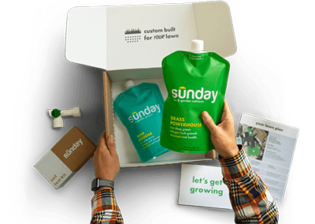For those looking to grow a lush lawn in Minnesota, choosing the right grass seed is crucial. While Kentucky Bluegrass is a popular choice and can thrive in the state’s cool climate, there are other options worth considering.
However, cultivating a healthy lawn in Minnesota is not without its challenges, such as harsh winter temperatures and soil acidity issues.
To ensure your lawn stays green and vibrant, it’s important to choose the best grass seed for Minnesota’s unique conditions. In this article, we’ll take a closer look at the top grass seed options available and explore the pros and cons of each.
Kentucky Bluegrass
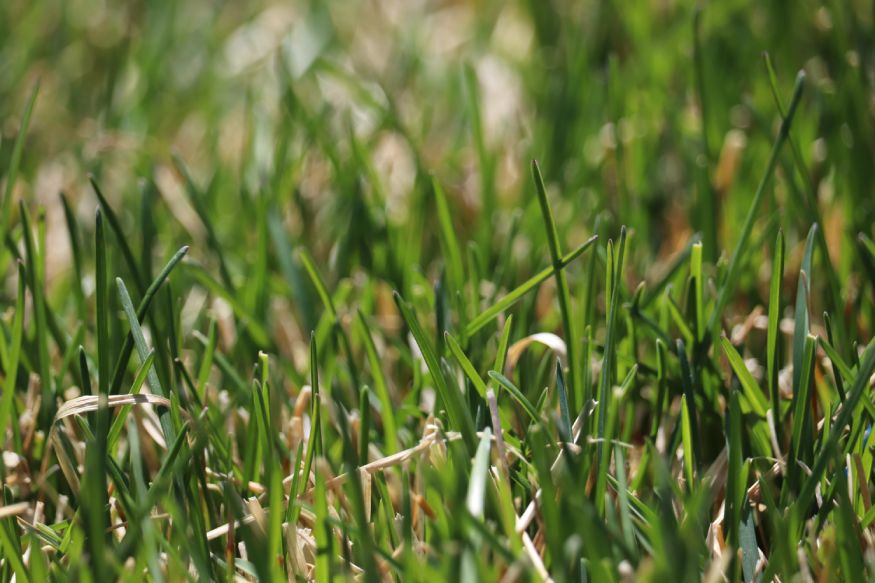
| Also Known As | Poa pratensis L. |
| Type of Grass | Cool season perennial |
| Optimal Zones | Northern cool season zone, transition zones |
| Root Structure | Shallow |
| Winter hardiness | Excellent |
| Shade tolerance | Poor to Good |
| Water Requirements | High |
| Drought Tolerance | Poor |
| Self Repair Capacity | Excellent |
| Overall Maintenance Requirements | High |
Why Kentucky Bluegrass Is the most popular choice in Minnesota
Kentucky bluegrass is the most widely used turfgrass in Minnesota, and for good reason. It forms a long-lasting, dense lawn that is ideal for residential and park use. Bluegrass grows rapidly during cool, moist weather, with slower growth during hot, dry weather. However, it does require extensive maintenance, including regular watering, fertilizing, and pesticide applications.
Kentucky bluegrass is a cool-temperature grass that can tolerate lower temperatures than most other grasses, making it a good choice for Minnesota’s climate.
To maintain its bright emerald color, frequent watering is necessary when there is a lack of rainfall, and it should be mowed regularly to keep its recommended height of 1 ½ to 2 ½ inches.
Although Kentucky bluegrass is a high-maintenance grass, it has many pros that make it an attractive option:
- It is extremely resistant to wear and foot traffic, making it great for frequently used lawns.
- Its aggressive rhizomes help the turf to recover from wear and tear, and it is available in both seed or sod form.
- It has good disease tolerance when managed well and goes dormant during droughts without dying.
However, Kentucky bluegrass also has some cons to consider:
- It has a high water requirement and a shallow root system, making it vulnerable to drought.
- It also has low shade tolerance and is not ideal for high-traffic areas.
- It is prone to thatch, disease, and insect problems.
Overall, Kentucky bluegrass is one of the best grass seeds for Minnesota’s unique conditions. Its attractive color, density, and wear resistance make it a popular choice despite its high maintenance requirements. If you are looking for a lush, vibrant lawn that will require some extra effort, Kentucky bluegrass may be the perfect choice for you.
Looking for the best grass seed for your region?
Our smart lawn plans are designed to work perfectly with your local soil and climate conditions, without any of the toxic stuff.
Use the code EHG20 for an instant $20 discount!
- Personalized lawn care: Custom lawn plans based on soil analysis, climate data, and your specific lawn needs.
- Convenience with a conscience: Products that are not only easy to use but also safe for you, your pets, and the planet.
- Science-backed formulas: Bio-based formulas contain effective, natural ingredients like seaweed, molasses, and iron.
- Expert support: Get one-on-one guidance from a real person and rest easy with Sunday's satisfaction guarantee.
Fine Fescues
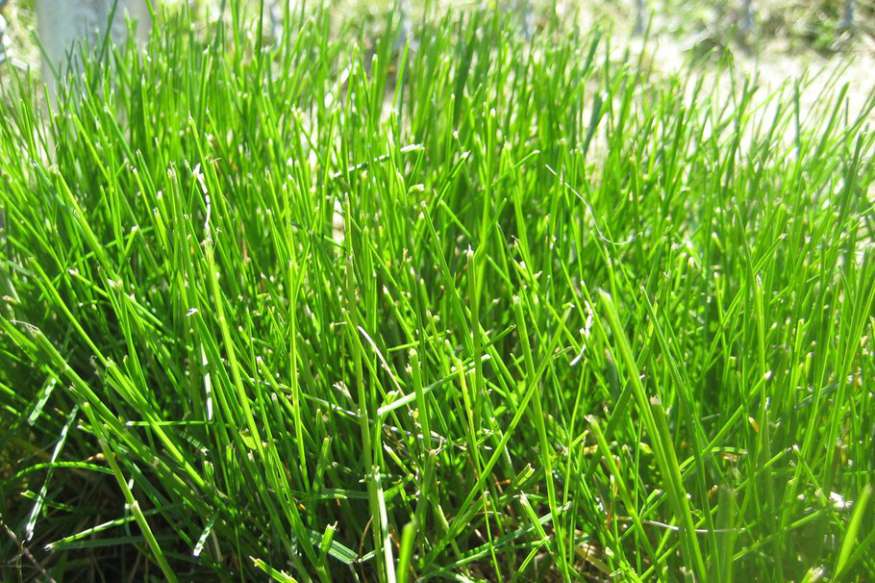
| Also Known As | Hard fescue, strong creeping red fescue, slender creeping red fescue, sheep fescue, chewings fescue; Festuca L. |
| Type of Grass | Cool season perennial |
| Optimal Zones | Northern zones |
| Root Structure | Medium |
| Winter hardiness | Excellent |
| Shade tolerance | Excellent |
| Water Requirements | Medium to High |
| Drought Tolerance | Excellent |
| Self Repair Capacity | Limited |
| Overall Maintenance Requirements | Low |
Why The Fine Fescues are a great Choice for Minnesota Lawns
Fine-leafed fescues are a great alternative to Kentucky bluegrass in Minnesota. These cool season turfgrasses are tolerant of shade and infertile, droughty soils, making them ideal for dry, shady sites. Compared to bluegrasses, fescues require minimal levels of management, including less fertilizer and water.
There are three types of fine-leafed fescues grown in Minnesota – red fescue, chewings fescue, and hard fescue. These grasses are hardy and can tolerate a lot of traffic. They can grow in some shade and do not need more than about 4 hours a day of direct sun. The fine fescue grass species has fantastic shade tolerance and can grow in extreme conditions, even in dry and infertile soil.
Fine fescue grass is easy to maintain and needs less water and fertilizer than Kentucky bluegrass. Overwatering and excessive fertilizer can cause thinning of the leaves and make the grass more susceptible to disease. Fine fescue requires a balanced watering program, and different types can be grown, including red fescue, chewings fescue, and hard fescue.
Fescue grass has deep roots, which means it has far greater access to underground moisture than other, more shallow-rooted grass varieties. This makes it drought tolerant and hardy.
Fescue grass doesn’t grow as fast as other varieties, so you won’t need to mow it as often. When you do, it’s important to cut it relatively high to avoid exposing the sod, which can dry it out and cause bare patches. While fescue isn’t a particularly quick grower, the new blades will generally start appearing less than two weeks after sowing.
However, fescue grass is susceptible to pests and diseases in wet conditions, so good soil drainage is important. It’s also a rather coarse grass, which may not be ideal for some backyards used for activities such as rolling around. Despite these minor drawbacks, fine-leafed fescues are a great option for a low maintenance cool season grass in Minnesota’s unique conditions.
Pros of Fine Fescue in Minnesota:
- Fine fescue is low maintenance and requires less water and fertilizer compared to other grasses
- It has fantastic shade tolerance and can grow in extreme conditions, even in dry and infertile soil
- It is hardy and can take a lot of traffic
- The roots of fescue run particularly deep, giving it greater access to underground moisture
Cons of Fine-leafed Fescues in Minnesota:
- In wet conditions, fescue may be susceptible to invasion from pests and diseases
- Fescue has a coarse texture that may not be ideal for activities like playing on the lawn.
Perennial Ryegrass
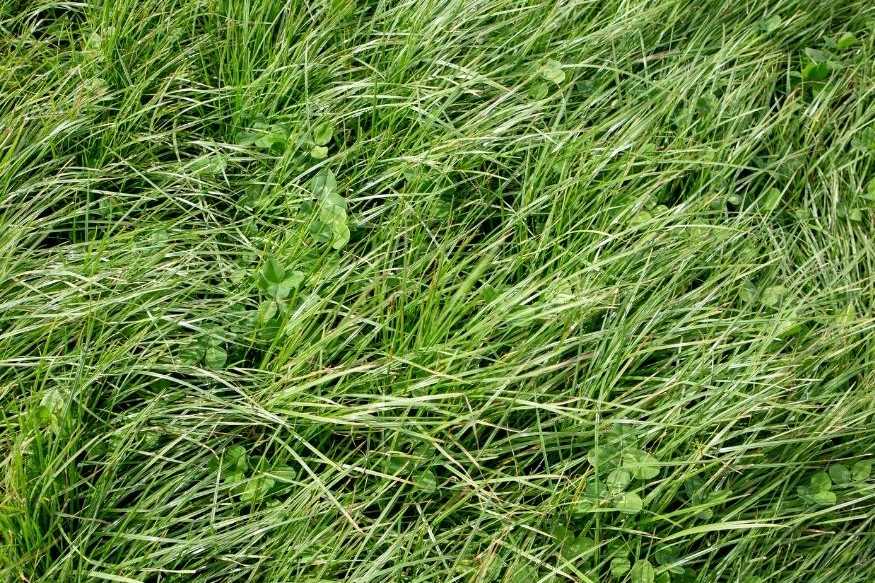
| Also Known As | Lolium perenne L. |
| Type of Grass | Cool season perennial |
| Optimal Zones | Mild northern zones |
| Root Structure | Deep |
| Winter hardiness | Good to excellent |
| Shade tolerance | Moderate |
| Water Requirements | High |
| Drought Tolerance | Good |
| Self Repair Capacity | Excellent wear tolerance |
| Overall Maintenance Requirements | Moderate to high |
Why Perrenial Ryegrass Is a Good Choice For Minnesota
Perennial ryegrasses are hardy grasses that have an erect bunch-type growth habit with rapid seed germination and establishment. They prefer medium levels of fertility and well-drained soils.
Both common and improved types of perennial ryegrasses are available. Common types tend to be short-lived due to a lack of winter hardiness, have a coarse appearance, and a tough fibrous leaf with poor mowing quality. Improved cultivars, developed for turf use, have greater winter hardiness and better mowing characteristics. These improved cultivars are the only ones that should be considered for a lawn where rapid cover and wear tolerance are required.
Perennial ryegrass is a popular grass seed choice in Minnesota, as it is suited to cooler temperatures. It grows well throughout the year, although it slows down during winter.
While it has a low resistance to drought, some perennial versions have been cultivated to be hardier and are better suited to areas that experience a lot of wear. Perennial ryegrass grows quite quickly and prefers the sun but can tolerate some shade. It requires medium levels of fertilizer and well-drained soil.
Pros of Perennial Ryegrass:
- Shade-tolerant: It can grow well in areas with limited sunlight.
- Tolerates close mowing: It can be mowed to a low height without causing damage.
- Grows at a rapid pace: It is able to quickly fill in bald patches and produce a full, textured lawn.
- Drought-tolerant: It can withstand short periods of dry weather.
- Plays well with other plants and grasses: It can be mixed with other seed options for optimal growth and appearance.
- Naturally aids in aeration: Its deep rooting system helps break up soil and improve aeration.
Cons of Perennial Ryegrass:
- High maintenance: It requires frequent mowing, watering, and fertilization to maintain its appearance.
- Invasive species: It can rapidly grow and overtake other vegetation if not controlled.
- Susceptible to diseases: It is prone to diseases such as brown patches, lawn rust, and leaf spots.
- Doesn’t do well in winter weather: It is not able to withstand extremely cold temperatures.
- Requires a lot of fertilizer: It needs consistent fertilizing to thrive.
- Requires regular mowing: It can quickly grow out of control if not mowed regularly.
Rough Bluegrass

| Also Known As | Poa Trivialis |
| Type of Grass | Cool season perennial |
| Optimal Zones | Mild northern zones |
| Root Structure | Shallow |
| Winter hardiness | Poor |
| Shade tolerance | High |
| Water Requirements | High |
| Drought Tolerance | Poor |
| Self Repair Capacity | Poor |
| Overall Maintenance | Moderate to high |
Why Rough Bluegrass Grows Well in Minnesota
Rough bluegrass is a grass that forms a light green prostrate turf that is adapted to moist, shaded conditions. It is superior to Kentucky bluegrass in establishment vigor, but it will not tolerate traffic or hot, dry conditions. This grass is best planted in shaded areas that do not receive a lot of wear and tear.
It has a vibrant color, and you shouldn’t mix it with any other seeds because this can create a noticeable color contrast with other grasses on your lawn.
Rough bluegrass germinates quickly but is more sensitive to changing weather and foot traffic. It is capable of forming a reasonable turf under certain limited environmental conditions and careful management. It is fine-textured turfgrass developing a high shoot density under cool, moist conditions. It is capable of withstanding a considerable amount of shade if sufficient moisture is present.
It is one of the most winter hardy turfgrasses with very good low-temperature tolerance.
However, rough bluegrass has major weaknesses, including poor wear, drought, and high-temperature tolerance. It responds vigorously to fertilizer and irrigation, and under conditions where water is supplied too frequently, it becomes intolerably aggressive and smothers out the Kentucky bluegrass. During July and August, patches of rough bluegrass wilt and brown-out markedly unless careful attention is paid to its water requirements.
Rough bluegrass is not recommended except for wet, shaded sites where fine-leaved fescues will not persist. If you want a grass type that is well adapted to shaded and moist conditions, the rough bluegrass is the one for you.
The leaf blades are upright at first, but tend to lay down and mat as the patches become older. Because the root system is shallow, the patches are easily pulled up in tufts or clumps.
Rough Bluegrass Pros:
- Germinates quickly
- Well-adapted to shaded and moist conditions
- One of the most winter hardy turfgrasses with very good low-temperature tolerance
Rough Bluegrass Cons:
- Poor wear, drought, and high-temperature tolerance
- Can become intolerably aggressive and smother out other grass types if watered too frequently
- Not recommended except for wet, shaded sites where fine-leaved fescues will not persist
Missouri’s Climate And Growing Challenges For Lawns
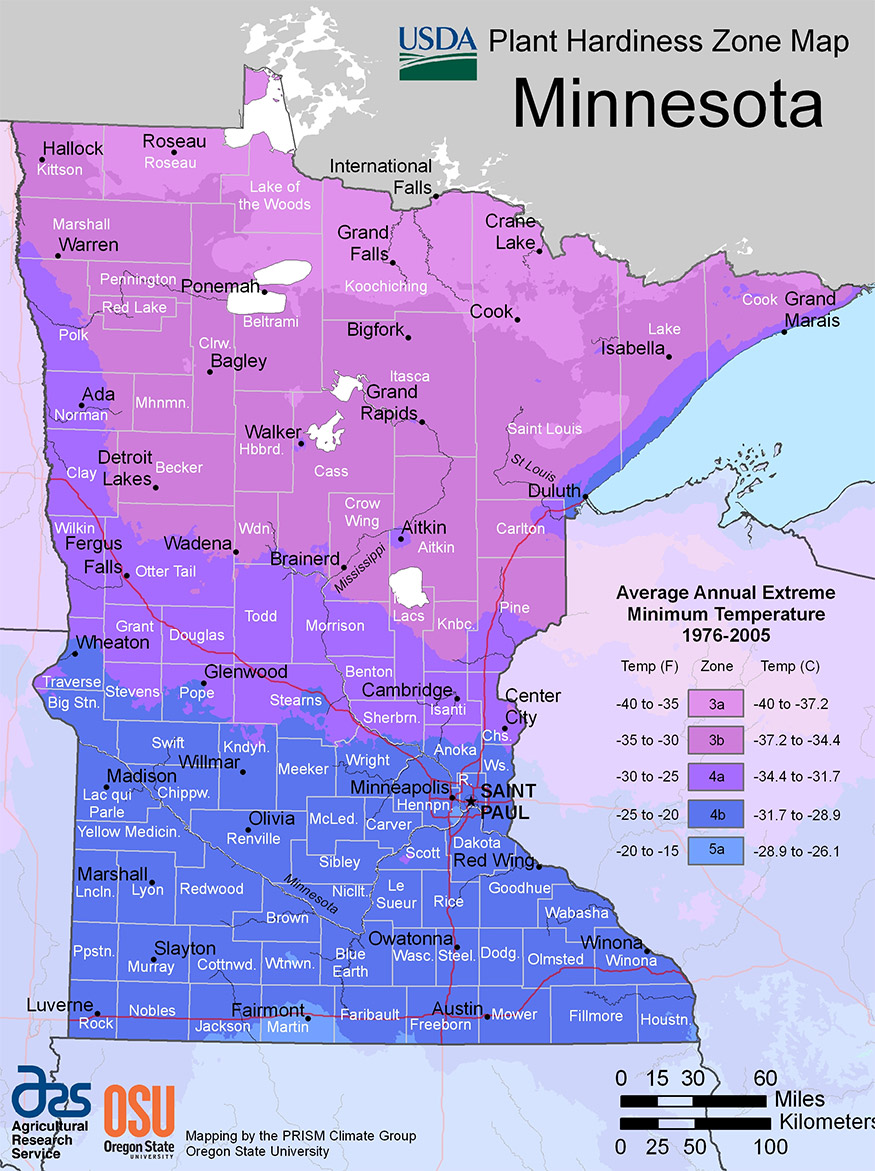
Minnesota’s climate and soil conditions present unique challenges for homeowners looking to grow a healthy lawn. The state experiences harsh winters with cold temperatures and heavy snowfall, as well as hot summers with occasional droughts.
Challenges in Soil Conditions
Minnesota’s soil conditions also pose a challenge for lawn care. The state’s soil is typically clay-based, which can make it difficult for water and nutrients to penetrate the soil. This can result in poor root development and limited growth, as well as increased susceptibility to pests and diseases.
Challenges in Growing Conditions
In addition to climate and soil conditions, there are other challenges to growing lawns in Minnesota. One of these is the presence of weeds and other invasive species that can quickly take over a lawn if not properly managed.
Another challenge is the presence of pests such as grubs, which can damage the roots of grass and lead to unsightly patches in the lawn.
Choosing the Right Grass Type
Despite these challenges, there are grass types that are well-suited for Minnesota’s climate and soil conditions. Cool-season grasses like Kentucky bluegrass and perennial ryegrass thrive in the cooler temperatures of the state and can handle both the hot summers and cold winters. Fine-leafed fescues are also a good choice for lawns in Minnesota, particularly in shaded areas where other grasses may struggle.
Overall, homeowners in Minnesota should be aware of the challenges posed by the state’s climate and soil conditions when selecting and maintaining their lawn. By choosing the right grass type and implementing proper lawn care practices, however, a healthy and vibrant lawn is still achievable.
Looking for the best grass seed for your region?
Our smart lawn plans are designed to work perfectly with your local soil and climate conditions, without any of the toxic stuff.
Use the code EHG20 for an instant $20 discount!
- Personalized lawn care: Custom lawn plans based on soil analysis, climate data, and your specific lawn needs.
- Convenience with a conscience: Products that are not only easy to use but also safe for you, your pets, and the planet.
- Science-backed formulas: Bio-based formulas contain effective, natural ingredients like seaweed, molasses, and iron.
- Expert support: Get one-on-one guidance from a real person and rest easy with Sunday's satisfaction guarantee.
